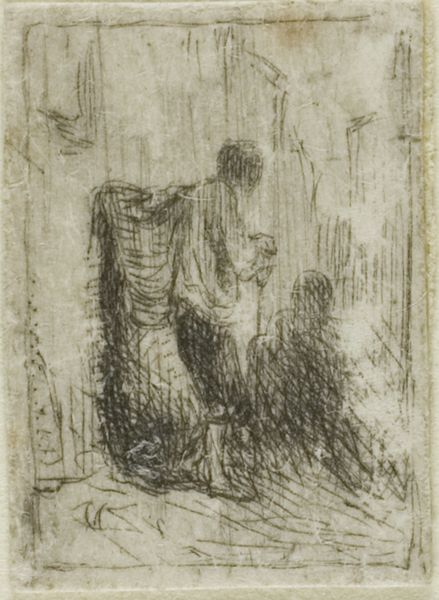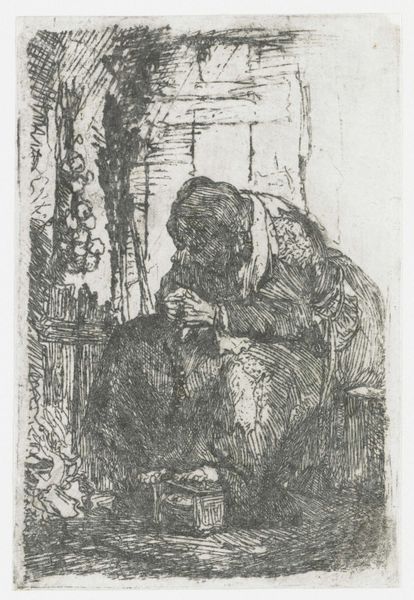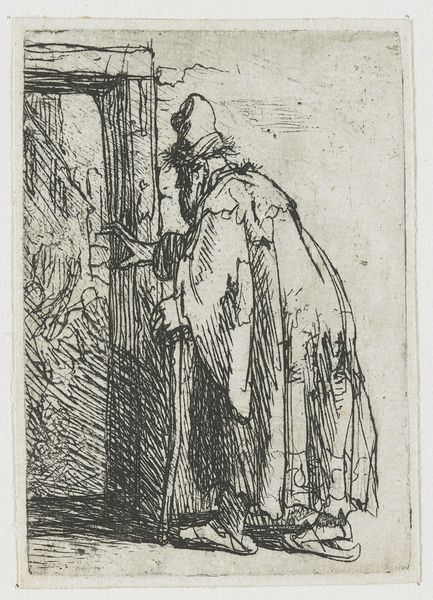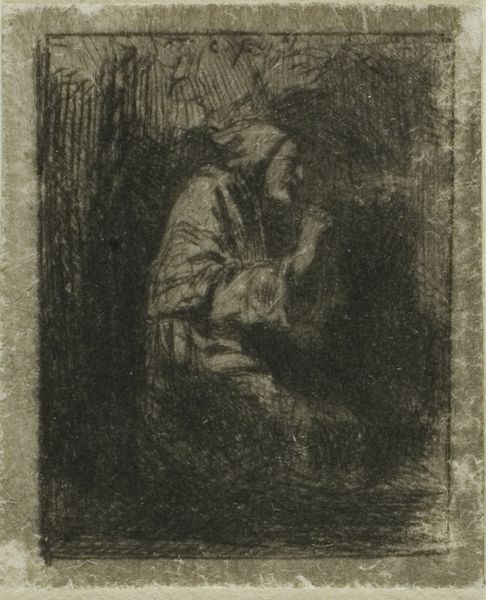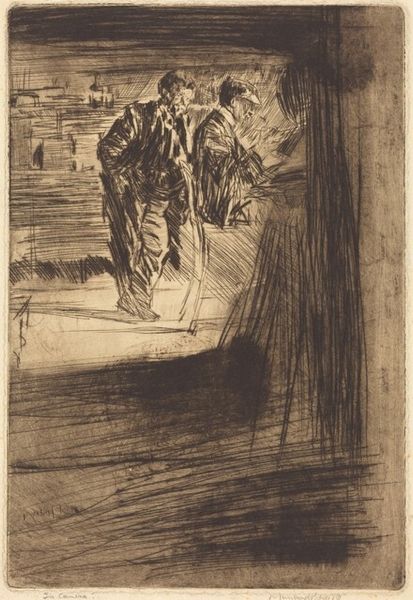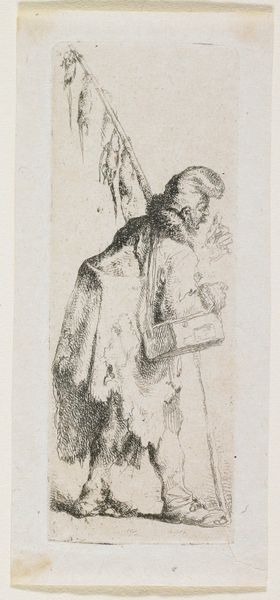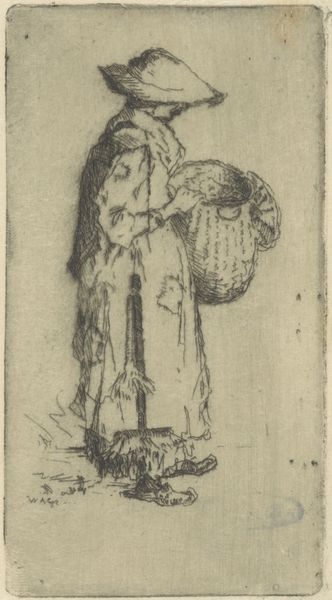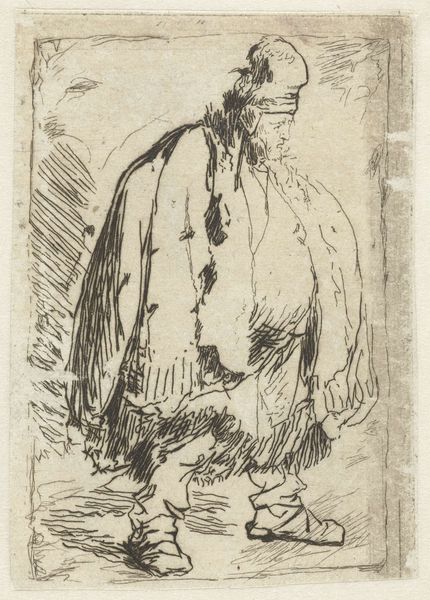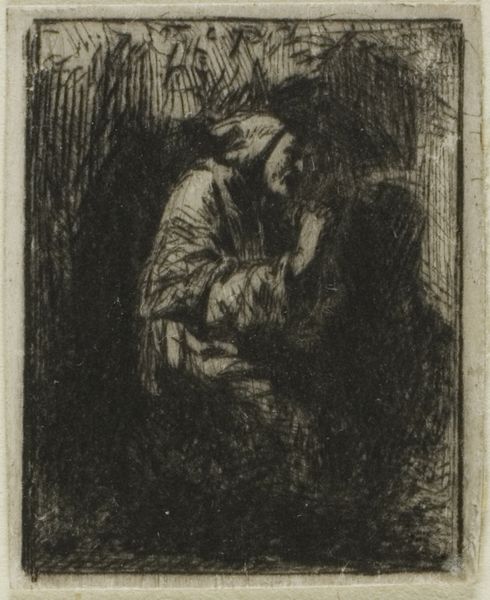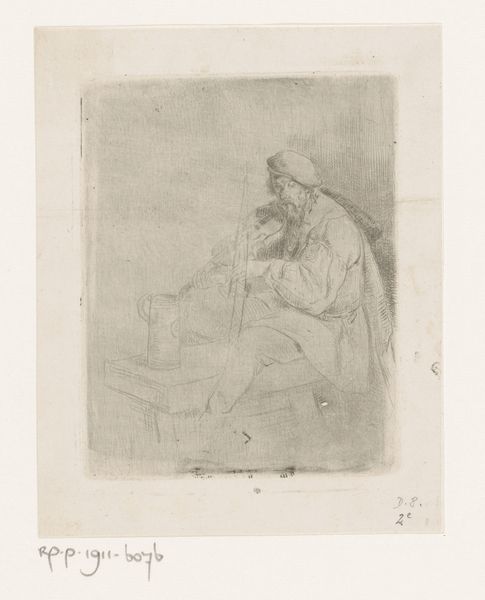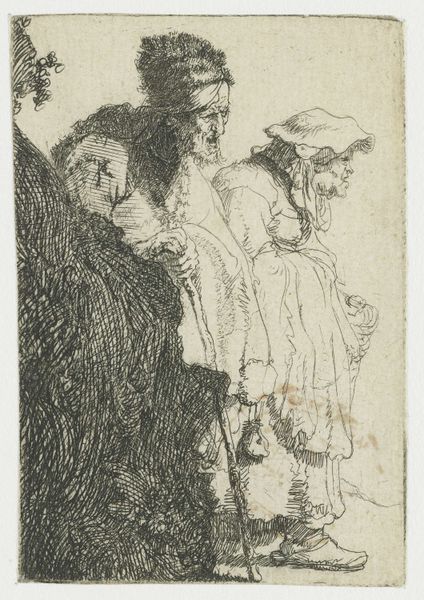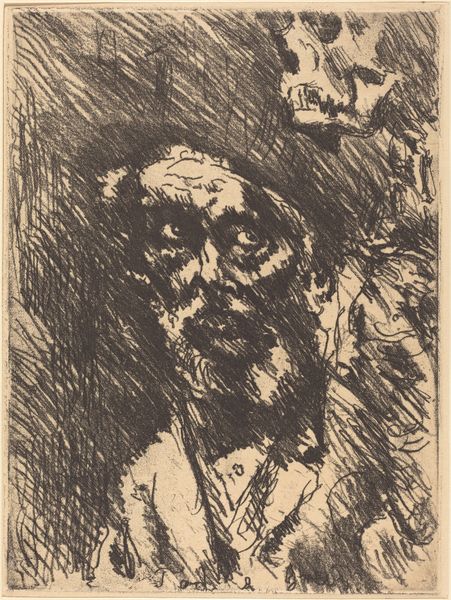
drawing, etching, ink
#
drawing
#
baroque
#
pen sketch
#
etching
#
etching
#
figuration
#
ink
#
line
#
history-painting
Dimensions: height 79 mm, width 69 mm
Copyright: Rijks Museum: Open Domain
Editor: Here we have Rembrandt van Rijn's "The Blindness of Tobit: a sketch," created around 1629, using ink, pen and etching techniques. The scene feels so raw, almost like we are peeking into a private moment, though the hatching is dense and obscuring, leaving a lot to my imagination. What can you make of it? Curator: Note how Rembrandt orchestrates this drama purely through the syntax of line. The agitated, almost frenzied, etching lines to the left do more than just indicate shadow; they become symbolic of the disarray and suffering within the scene. Consider the weight and texture he achieves simply by varying the pressure and direction of the lines. Editor: That makes sense. It’s interesting how much emotion can be conveyed through something as simple as line variations, especially how they create such a contrast to the smoother rendering of the central figure’s garments. Is this a common technique? Curator: Precisely! The contrast serves to emphasize the central figure's vulnerability and perhaps also a certain isolation. Common? Yes, but Rembrandt’s mastery lies in the individualized application. Reflect, too, on the composition; it seems unbalanced, as though deliberately denying a stable grounding. Ask yourself, what feeling does this aesthetic choice evoke? Editor: It's like a snapshot of a tumultuous moment. Now, seeing how the lack of clear structure mirrors the scene's emotional weight, that's not something I would have immediately noticed! Thank you. Curator: Indeed. This exercise illustrates the intrinsic power of formal elements. When skillfully deployed, they reveal more than mere representation; they transmit feeling.
Comments
No comments
Be the first to comment and join the conversation on the ultimate creative platform.
